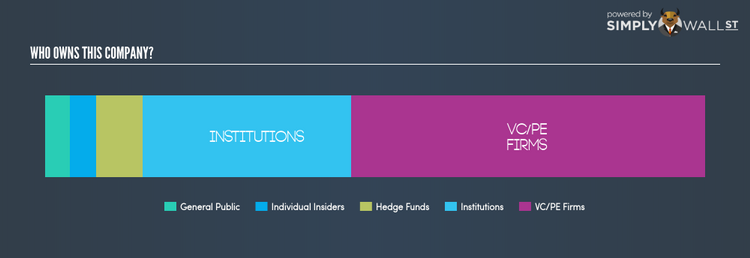Who Are The Top Investors In Allena Pharmaceuticals Inc (NASDAQ:ALNA)?

In this article, I’m going to take a look at Allena Pharmaceuticals Inc’s (NASDAQ:ALNA) latest ownership structure, a non-fundamental factor which is important, but remains a less discussed subject among investors. The impact of a company’s ownership structure affects both its short- and long-term performance. Since the same amount of capital coming from an activist institution and a passive mutual fund has different implications on corporate governance, it is a useful exercise to deconstruct ALNA’s shareholder registry.
View our latest analysis for Allena Pharmaceuticals
Institutional Ownership
In ALNA’s case, institutional ownership stands at 31.56%, significant enough to cause considerable price moves in the case of large institutional transactions, especially when there is a low level of public shares available on the market to trade. Although ALNA has a high institutional ownership, such stock moves, in the short-term, are more commonly linked to a particular type of active institutional investors – hedge funds. With hedge funds holding a 7.08% stake in the company, its share price can experience heightened volatility. I am going to further examine ALNA’s ownership structure to check how other major shareholders can affect its investment case.
Insider Ownership
I find insiders are another important group of stakeholders, who are directly involved in making key decisions related to the use of capital. In essence, insider ownership is more about the alignment of shareholders’ interests with the management. ALNA insiders hold a not-so-significant 3.99% stake in the company, which somewhat aligns their interests with that of shareholders. However, a higher level of insider ownership has been linked to management executing on high-returning projects instead of expansion projects for the sake of apparent growth. It would also be interesting to check what insiders have been doing with their shareholding recently. Insider buying can be a positive indicator of future performance, but a selling decision can be simply driven by personal financial requirements.
General Public Ownership
The general public, with 3.86% stake, is a relatively minor group of shareholders in ALNA. This size of ownership may not be enough to sway a policy decision in their favour, but they can still make a collective impact on company policies if it aligns with other large shareholders.
Private Equity Ownership
Private equity firms hold a 53.51% stake in ALNA. With a stake of this size, they can be influential in key policy decisions. An investor should be encouraged by the ownership of these institutions who are known to be experts in increasing efficiency, improving capital structure and opting for value-accretive policy decisions.
Next Steps:
With significant institutional ownership, including active hedge, existing investors should seek a margin of safety when investing in ALNA. This may enable shareholders to comfortably invest in the company and avoid getting trapped in a sustained sell-off that is often observed in stocks with this level of institutional participation. However, ownership structure should not be the only focus of your research when constructing an investment thesis around ALNA. Instead, you should be evaluating company-specific factors such as the intrinsic valuation, which is a key driver of Allena Pharmaceuticals’s share price. I highly recommend you to complete your research by taking a look at the following:
1. Future Outlook: What are well-informed industry analysts predicting for ALNA’s future growth? Take a look at our free research report of analyst consensus for ALNA’s outlook.
2. Financial Health: Is ALNA’s operations financially sustainable? Balance sheets can be hard to analyze, which is why we’ve done it for you. Check out our financial health checks here.
3. Other High-Performing Stocks: Are there other stocks that provide better prospects with proven track records? Explore our free list of these great stocks here.
NB: Figures in this article are calculated using data from the last twelve months, which refer to the 12-month period ending on the last date of the month the financial statement is dated. This may not be consistent with full year annual report figures.
To help readers see pass the short term volatility of the financial market, we aim to bring you a long-term focused research analysis purely driven by fundamental data. Note that our analysis does not factor in the latest price sensitive company announcements.
The author is an independent contributor and at the time of publication had no position in the stocks mentioned.

